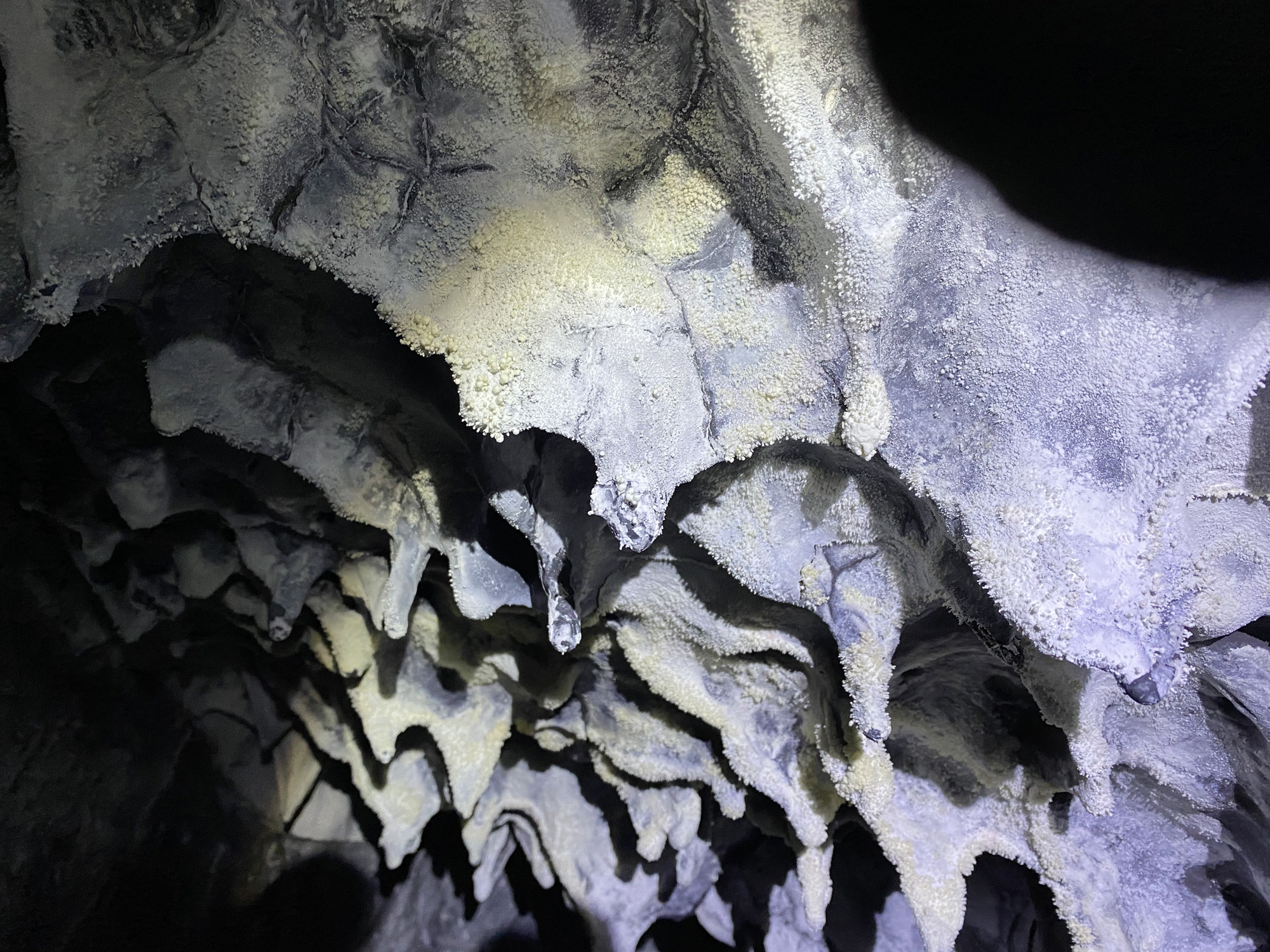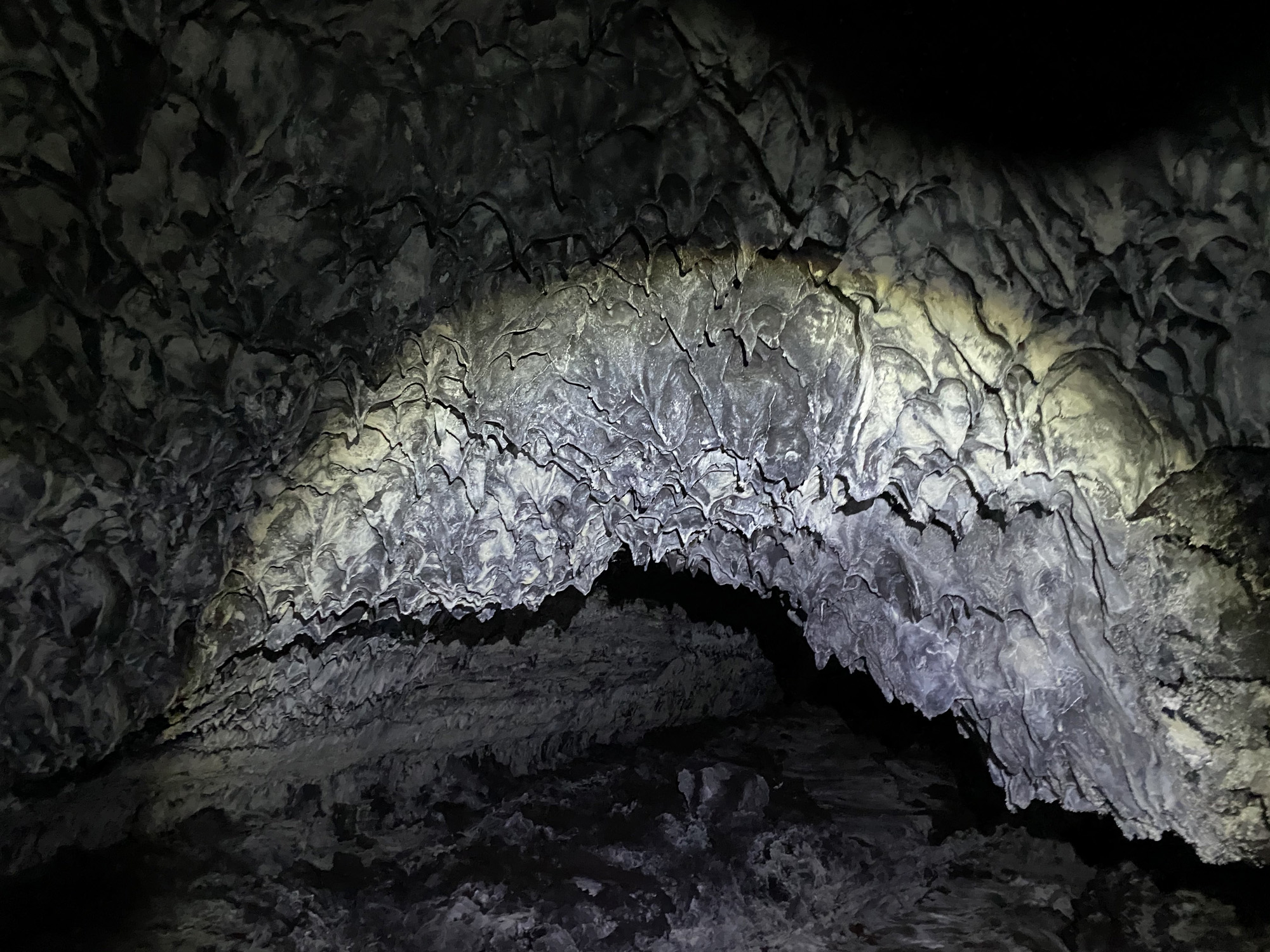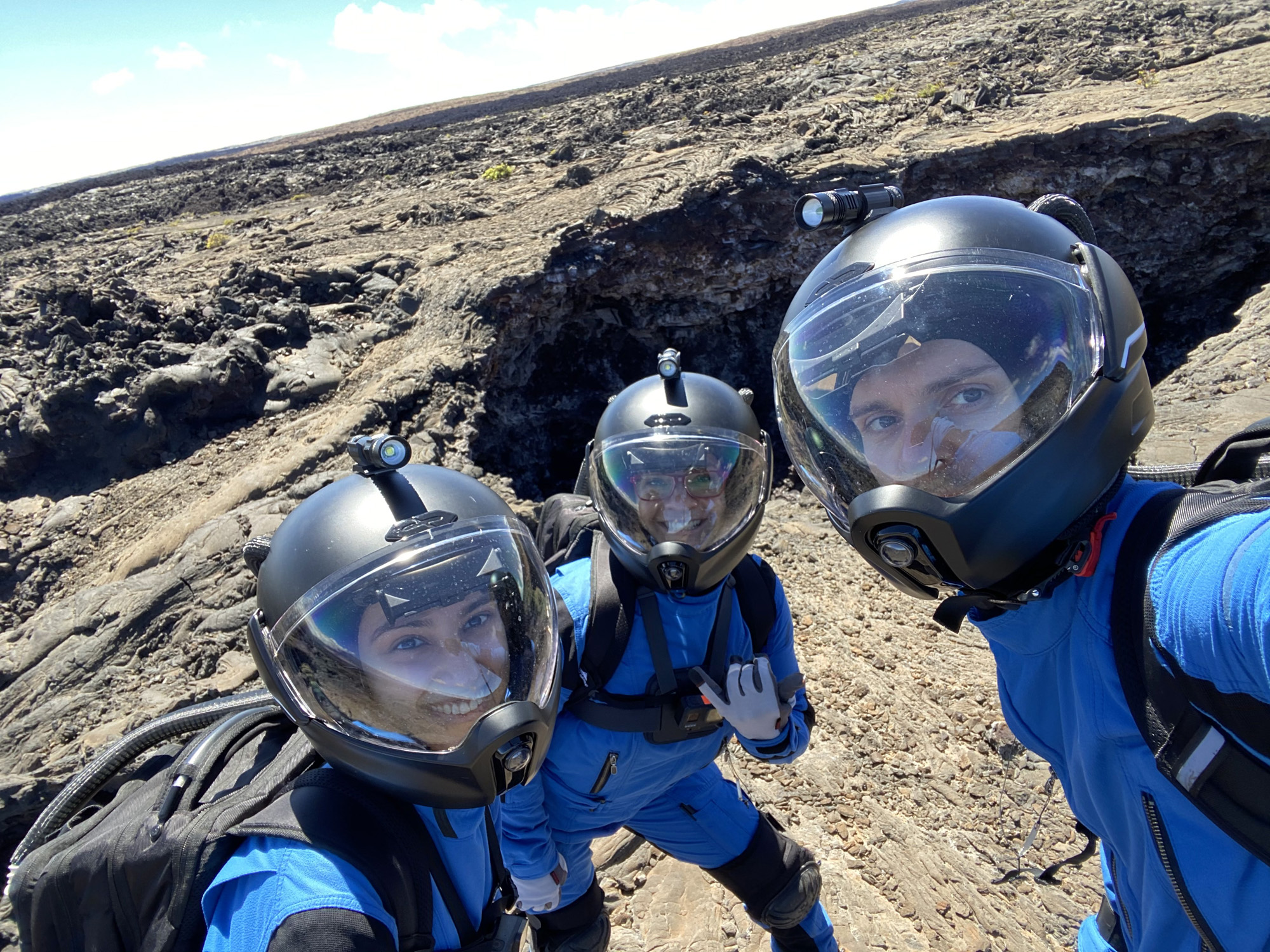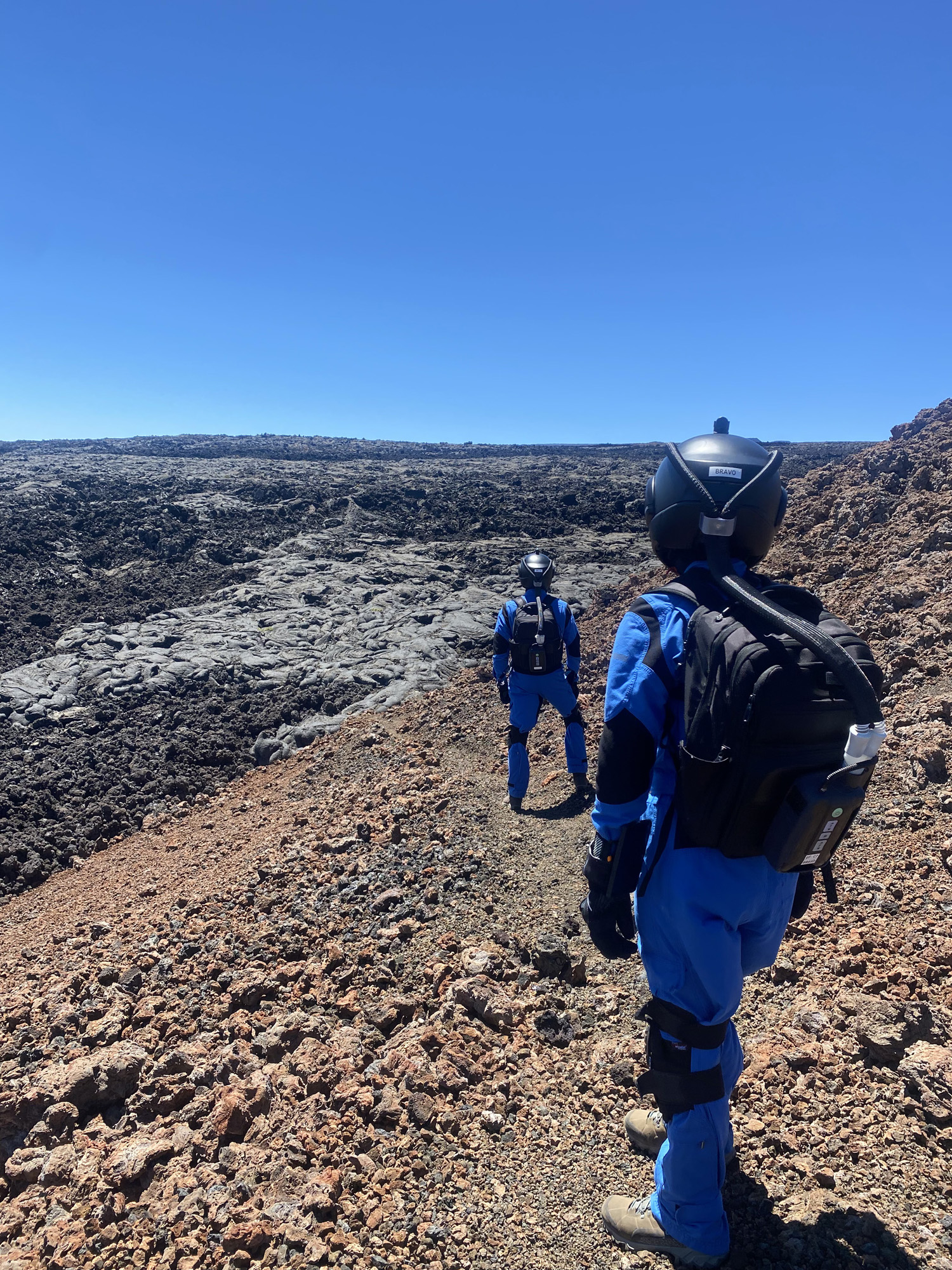The curse and silver lining of Martian dust storms – Commander's report: sol 10
Valoria 3 crewmembers have been successfully dealing with the challenges bad weather has thrown at them during their mission, both inside and outside the HI-SEAS habitat.

Dr. Michaela Musilova is the director of Hawaii Space Exploration Analog and Simulation (HI-SEAS) program, which conducts analog missions to the moon and Mars for scientific research at a habitat on the volcano Mauna Loa. Currently, she is in command of the two-week Valoria 3 martian mission and contributed this report to Space.com's Expert Voices: Op-Ed & Insights.
Commander's report for the Valoria 3 Martian mission at HI-SEAS
Sol 10 (Aug. 22, 2021)
Take two, or more like take 25? Today, we attempted yet another "Marswalk" to a nearby lava cave. It seems like we have to reschedule our Marswalks endlessly these days, because "dust storms" — rainy and foggy weather on Hawaii's Mauna Loa volcano, where HI-SEAS is located — come in at the last minute to disrupt our plans. "Static storms" are dust storms with lightning, since the same kinds of thunderstorms we experience on Earth don't occur on Mars.
We got lucky with the weather today. It cleared for three hours, which gave the Valoria 3 crew enough time to explore a lava cave — or lava tube, as we call it. I led Officers Elisha Jhoti and Nils Averesch to the Caradhras lava tube and trained them on how to carefully navigate the rough volcanic terrain on the way there.
You may recognize the name "Caradhras" from "The Lord of the Rings." The lava tube was named by a HI-SEAS crewmember a couple of years ago, as a reward for having mapped that particular cave system; I give crewmembers the chance to name geological formations around HI-SEAS if they discover and/or map something new during their research. These names are then passed from mission to mission, but they stay within our simulated space world.
Related: Mock Mars mission: How to suit up for a 'Marswalk'
Breaking space news, the latest updates on rocket launches, skywatching events and more!
With the help of Elisha and Nils, I collected biological and geological samples for my different research projects. One project, a collaboration with NASA's Goddard Space Flight Center and Honeybee Robotics, focuses on understanding how extreme life-forms — so-called extremophiles — can survive within lava tubes on Earth and other planetary bodies. I also collected samples for a project by researchers from the University of Westminster. It seeks to study how quickly humans can contaminate a pristine environment, such as the one around HI-SEAS. The results of this research can help us to better prepare for the human exploration of other celestial bodies. In particular, it will help us estimate the human impact on an environment for planetary protection reasons.
The dust and static storms started raging again as soon as we returned to the habitat. I'm keeping my fingers crossed that the weather will be merciful tomorrow so that Officers Sarafina Nance and Britaney Philipps can go explore the Caradhras lava tube too! For now, we have to hunker down into what we call "low-power mode." This is when we have to limit all usage of electricity within the habitat, since the storms don't allow our habitat's batteries to fully recharge without solar power. It usually means that we huddle together in the dimly lit habitat and work only with devices that were fully charged before the weather took a turn for the worse.
Low-power mode also affects our abilities to cook diverse meals. We try to minimize our use of cooking appliances, so our meals tend to be modest. As such, macaroni with freeze-dried cheese, instant mashed potatoes and chocolate protein balls (or "space balls," as the HI-SEAS crew likes to call them) tend to be the most common dishes served during dust storms.
It was perhaps the popularity of the space balls and Elisha's amazing baking skills that led us to another tricky situation during our mission: We are approaching a critical chocolate shortage. Now we need to ration not only electricity, but chocolate, too. Who would have thought that would be a potential recipe for disaster on Mars?
For Nils, being "stuck" inside the habitat due to the dust storms wasn't too much of a blow. On the contrary, his research project was successfully continuing in the habitat's lab despite the low-power mode. He cultivated his genetically engineered microbes under unsterile conditions in his bioreactors. Nils has been taking care of the culture for several days, thus allowing for biological polyesters to be produced. In the final days of the mission, Nils is planning to purify the product and assess its quality, and he will try to shape the bioplastics into useful objects that could support mission operations.
Fortunately, Elisha was able to collect more ground penetrating radar data during the small gaps in the dust storms at various times of the day. Her newest acquisition was a measurement, made with Nils' help, along a ridge made of cinder and over known lava tube networks. Elisha is planning to process the data she collected when we "get back to Earth," to see if she detected any new lava tubes around HI-SEAS.
As the engineering officer, Britaney has continued to ensure that all of our spacewalk equipment and life support systems in the habitat are fully functional, especially under these more challenging circumstances. Britaney has also continued using her fuel cell research to plan lessons on in situ resource utilization for her students back on Earth. She will be taking her fuel cell out on her next Marswalk, when she will set it up to a breadboard and multimeter to visualize the energy stored by the fuel cell.
Sarafina is yet another crewmember who has been enjoying her time on Mars. She has been making the most of both the Marswalks and her time in the habitat to further her work in supernova research, filming the mission for several outreach projects and working on her memoir. She has collected dozens of xenolith samples, which are pieces of rock trapped in another type of rock — in this case, within the lava near HI-SEAS. Sarafina has analyzed the samples' elemental abundances and found that they seem to contain mostly silica, sulfur, magnesium and iron. She looks forward to gathering more data on future Marswalks and comparing these data with those of supernova ejecta — that is, the material ejected when a star explodes.
Commander Musilova signing off to join the crew for some great chats in the cold but very welcoming living room area of the habitat. We gather here to spend time together and to get to know each other better, which is my favorite time of the day.
Follow Michaela Musilova on Twitter @astro_Michaela. Follow us on Twitter @Spacedotcom and on Facebook.
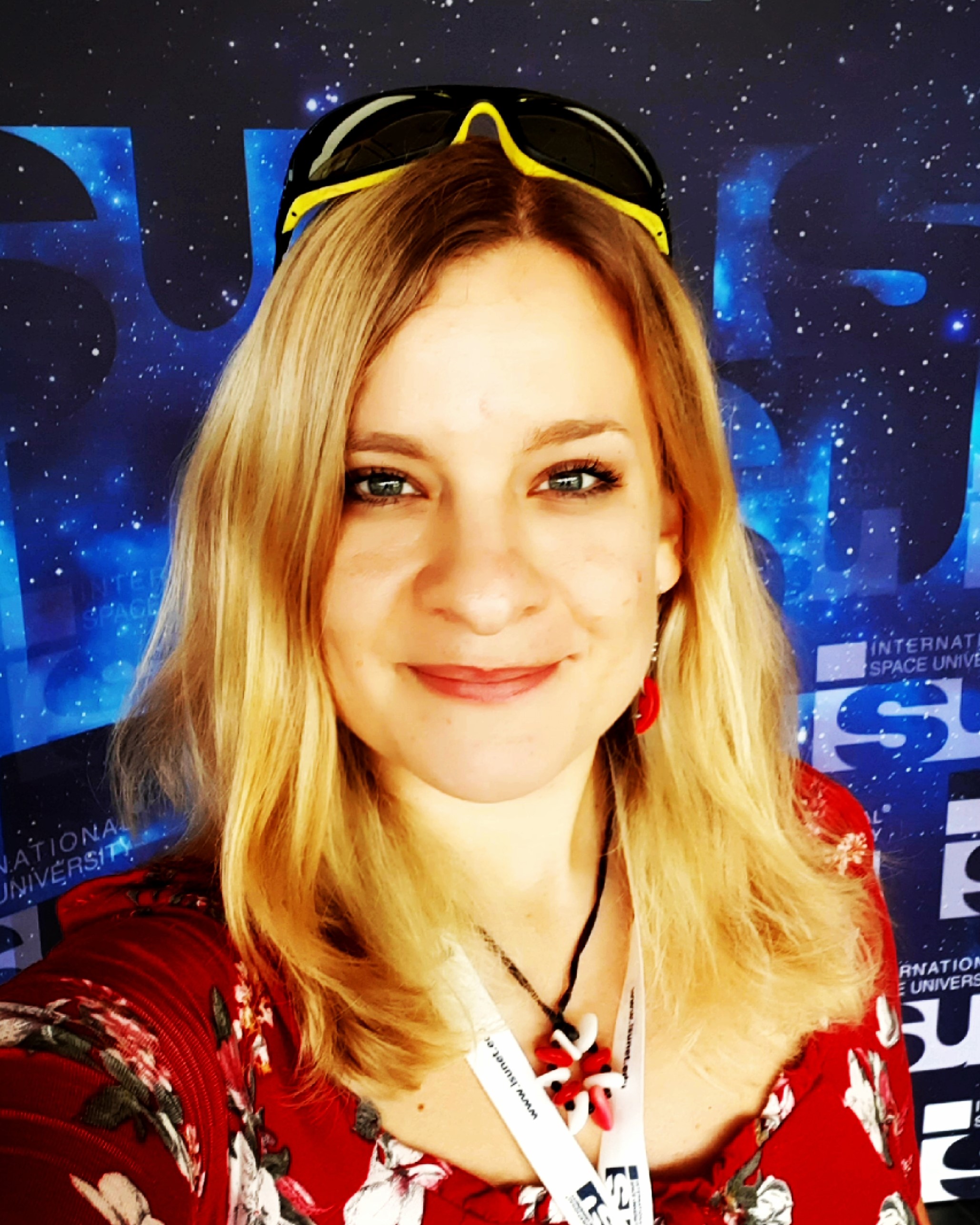
Dr. Michaela Musilova is an astrobiologist with a focus on life in extreme environments. She has a PhD degree from the University of Bristol and is a graduate from the International Space University's (ISU) Space Studies Program. Michaela's space research experience includes working at the NASA Jet Propulsion Laboratory, University of London Observatory, Canada-France-Hawaii Telescope, on NASA's and the U.K. Space Agency's MoonLite project, being an analogue astronaut and Commander of numerous simulated missions to the moon and Mars at the HI-SEAS station in Hawaii, and at the Mars Desert Research Station in Utah. Michaela is currently the Director of HI-SEAS, as part of the International MoonBase Alliance. She is also a visiting Professor at the Slovak University of Technology, Vice-Chair of the Slovak Organisation for Space Activities, Adjunct Faculty at ISU and the Senior Research Adviser for Mission Control Space Services Inc.
She has received numerous prizes and grants, including the Emerging Space Leaders Grant from the International Astronautical Federation (2016) and the Women in Aerospace – Europe Young Professional Award (2016), and she was selected as one of the most promising 30 under 30 by Forbes Slovakia (2015). Michaela is also actively involved in the Duke of Edinburgh's International Award, as a patron of the program in Slovakia and an Emerging Leader Representative for Europe, Mediterranean and Arab states. Furthermore, she enjoys participating in STEAM outreach activities from teaching at schools, giving public presentations, to working with the media and more, as well as encouraging people to pursue their dreams. For instance, she is an Advisory Board Member of the STEM Punks immersive programs for students and teachers.
